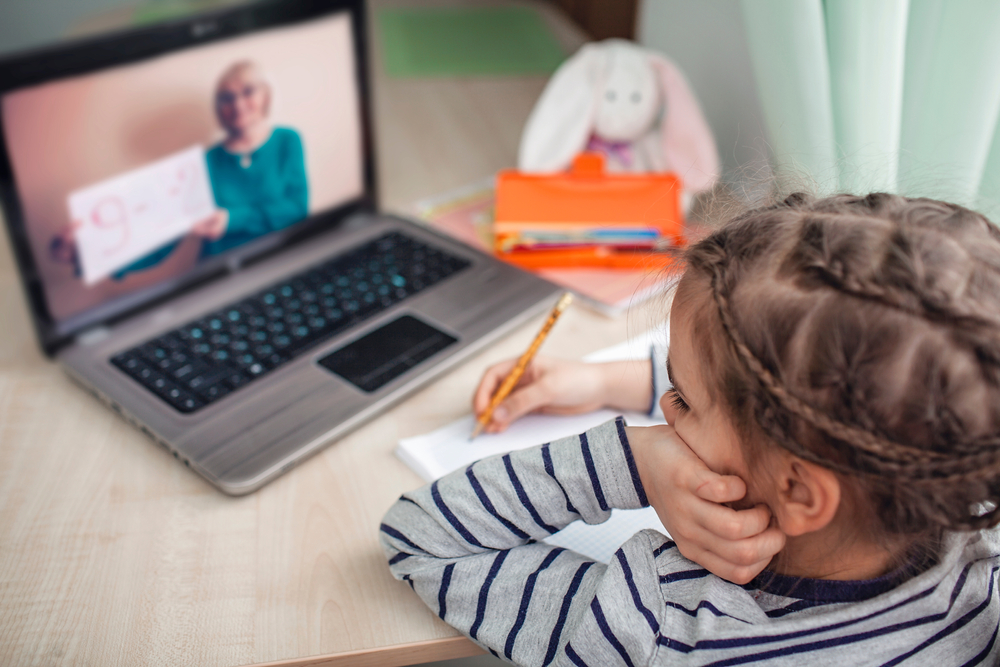Home learning is a concept that has never had to carry as much weight as it does today. With the COVID-19 pandemic confining people around the world to their homes, school districts have embraced remote classes and distance learning en masse. Unsurprisingly, considering how new learning at home is to many families, there have been some distinct challenges to overcome.
If your kids are learning at home, you’ve likely already encountered some of these issues, or will soon. Fortunately, none of the difficulties associated with distance learning are insurmountable. With the right combination of technology, focus and attitude, your family can make it through this crisis without the kids missing out on key parts of their education.
3 challenges of home learning
The following are three of the common issues that students, parents and teachers across Australia have had to grapple with through the first few months of mass home learning. By taking a few sensible steps, you can minimise the impact of these trends and turn your family’s schooling experience into a success.
1. Home learning and work from home go together
If you had whole days’ worth of free time to supervise your kids in their studies, home learning would be a much easier process. There is a chance, however, that all the adults in the home may be working at their jobs, contributing remotely. Parents sharing their experiences with ABC News reported mixed results matching their kids’ schedules with their own. In some school districts, there is a need for supervision, which has caused the parents’ work schedules to shift – this has led to the unpleasant experience of working until 2 a.m. or on weekends.
The challenges are greatest among parents of primary school-aged children, with many respondents telling ABC they have students under the age of 10 who require constant supervision or would be too disruptive of their parents’ work to allow both to occur side by side. The challenges and stress associated with keeping these young ones on task can be relieved or compounded by communication. When communication is lax or overbearing, the result may be greater worries.
Resolving the issue

For parents trying to work from home while their kids are present and learning, collaboration with schools is one of the main ways to improve conditions. As ABC News explained, since kids are not truly being home schooled, parents are within their rights to communicate with teachers about difficulties. Parents who are only able to perform their own work when their children aren’t learning can ensure their home offices are stocked with efficiency-building technology and their time-management strategies enable them to get a good night’s sleep.
2. Time management is tough
There are unique difficulties in cases when kids have flexible schedules and can hand in assignments when they’re ready instead of at the exact end of a school day. While this level of scheduling freedom helps families avoid the struggles of clashing work and school time, keeping students motivated in the absence of classrooms and teachers is a new challenge, one that may become worse over time. Queensland University of Technology professor Rebecca English told The Guardian afternoons can be especially challenging, with students sometimes losing steam and focus after lunchtime.
Amanda Dawkins, principal of Five Dock public school added that parents should be realistic in what they expect kids to accomplish at a sitting. Adults have to remember that students are not likely to sit down for six consecutive hours working. Getting them to do smaller blocks of work can suffice, and parents should not criticize themselves too harshly if their children become restless and have to stop.
Resolving the issue
One of the keys to time management is not being too harsh, English told The Guardian. When parents and their kids join together to work on the schedule for the day, the students get a sense of agency. Just having hard limits laid out for them could cause kids to become restless. Parents demonstrate trust in their young ones when they work with them rather than against them on a home learning schedule, and the results may be accordingly better.
3. Technology is necessary
One of the major issues associated with distance learning is that it is managed digitally. If families don’t have all the technology tools they need, and if schools are unable to provide them, it can be hard to meet requirements. A Victoria parent told The Age her family is having tech-related distance learning problems because they are presently staying in a temporary apartment, with little room and no printer.
It’s important for Government, Schools and Families to collaborate, to close the technology gap a little. For instance, The Age described solutions such as dedicated web portals and customised videos for students. Sometimes, families will find they don’t have enough devices for everyone in the household to get their work done simultaneously.
Resolving the issue
A home office well-stocked with affordable technology tools such as multi-function printers and scanners can help students keep handing in their work without missing a beat. Easy connectivity between these devices and computers or tablets is an important feature, because being slowed down by tough-to-use tech is not a good way for either children or parents to spend their days at home.
Succeeding in the home learning age
The current situation, with distance learning en masse and in-person courses for kids who cannot stay at home, is a compromise to deal with an unprecedented situation. You and your family can make it through this time, as there are ways to address all of the issues rising to the surface through the first few months of social distancing.
With the right attitude toward setting a schedule, support from the schools and access to effective technology, you can combine a work-from-home model with the new educational needs of your family. Until restrictions are relaxed, becoming familiar with distance learning is essential. Whether your family is currently working from home, learning from home or both, Brother has a range of award winning multi-function printers and scanners that can help you make work a little easier, visit our website to find out more.
This article has been republished from Brother Australia with minor changes.
The original article can be seen here: https://empowers.brother.com.au/2020/05/22/common-home-learning-challenges-and-how-to-overcome-them/

